Clam Linguine
Linguine...With Clams

What Is Clam Linguine?
Clam linguine is an Italian pasta dish that combines linguine with a flavorful sauce made from fresh clams, garlic, olive oil, white wine, and herbs such as parsley. The dish typically features clams in their shells, which are cooked to release their natural briny juices into the sauce, creating a light and savory flavor.
Ingredients For Clam Linguine
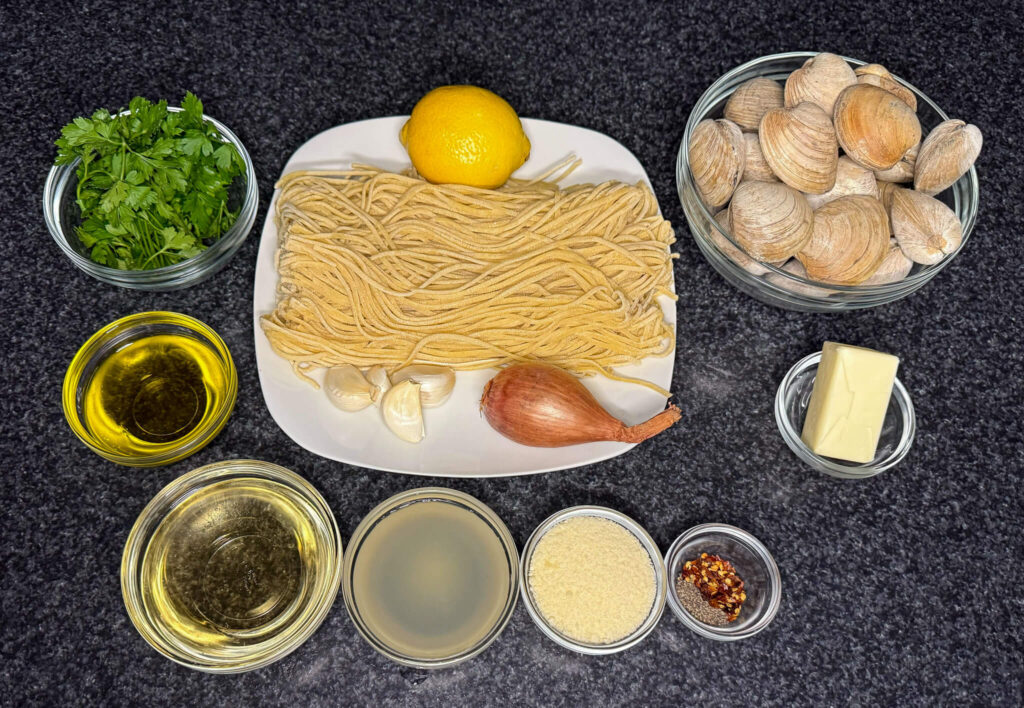

Produce
1 shallot
4 cloves garlic
1 lemon
1/4 cup fresh parsley
Refrigerated
2 tablespoons unsalted butter

Grocery
1 pound linguine
1/2 cup extra virgin olive oil
1/2 cup dry white wine
1/2 cup clam juice

Meat
2 dozen littleneck clams
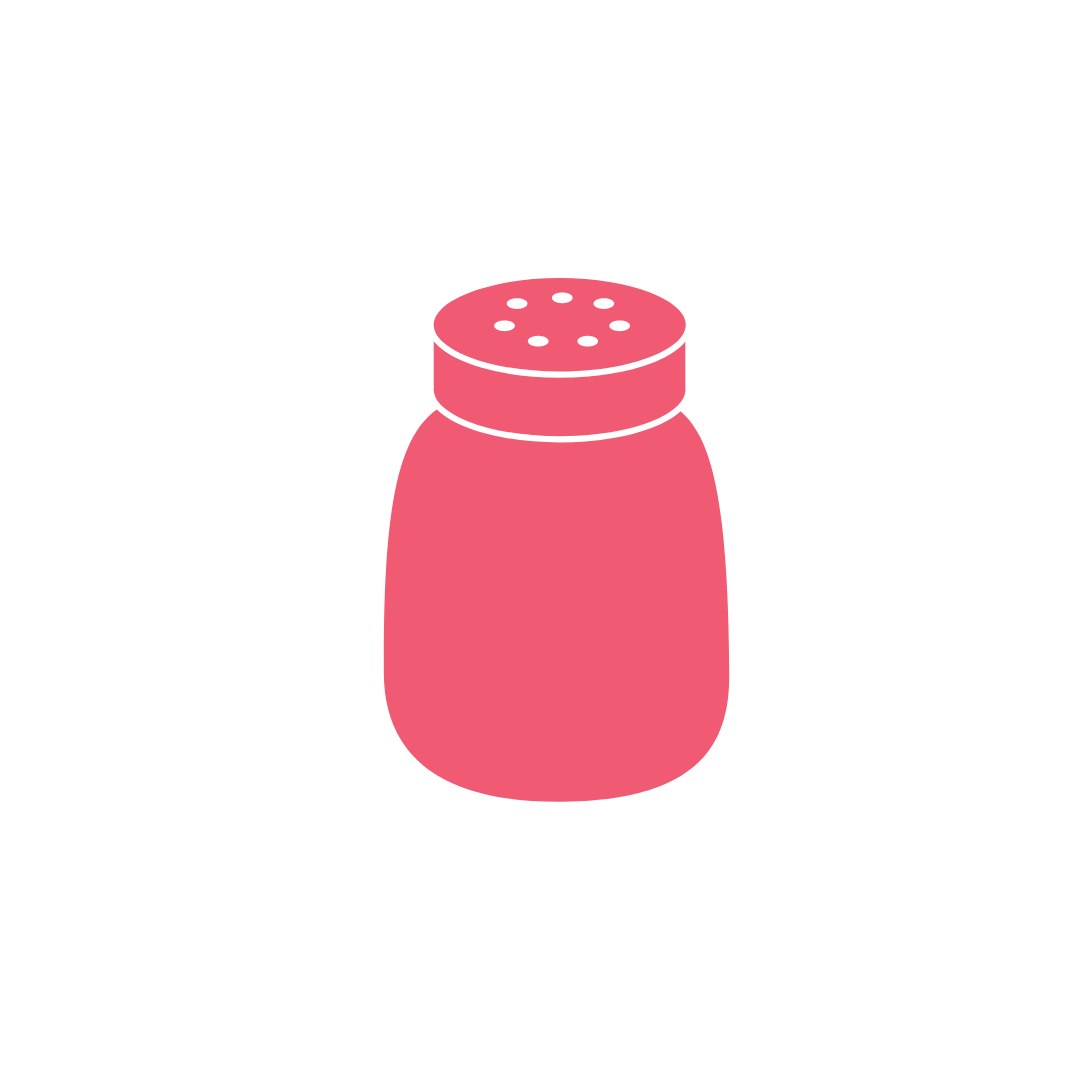
Spices
1/4 tsp red pepper flakes
1/2 tsp black pepper
How To Make Clam Linguine
Step 1
Clean Clams

The first step in cleaning clams is to inspect them carefully to ensure they are alive and safe to eat. Here’s what to look for:
- Check for damaged shells: Discard any clams that have cracked or broken shells. These clams may be dead and are not safe to eat.
- Look for open clams: If a clam is open, give it a gentle tap on the counter or squeeze it lightly. If the clam closes up, it’s alive and safe to use. If it doesn’t close, discard it.
- Smell the clams: Fresh clams should have a clean, briny smell, like the ocean. If any clams smell off or fishy, it’s best to discard them.
Once you’ve inspected the clams and discarded any damaged or dead ones, it’s time to clean the outer shells:
- Rinse under cold water: Place the clams in a colander and rinse them under cold running water. This removes any loose dirt, grit, or seaweed stuck to the outside of the shells.
- Scrub the shells: Using a stiff brush or clean kitchen sponge, gently scrub each clam’s shell to remove any stubborn debris. This step ensures that no unwanted dirt ends up in your dish when cooking.

Even though you’ve scrubbed the outside of the clams, there’s still the issue of sand inside their shells. To remove this, you need to purge the clams. Here’s how:
- Create a saltwater bath: Fill a large bowl with cold water and add salt to it – about 1/3 cup of salt per gallon of water. This saltwater mimics the natural seawater environment, which encourages the clams to release any sand trapped inside.
- Submerge the clams: Place the clams in the saltwater bath, ensuring they’re fully submerged. Let them soak for at least 20-30 minutes. During this time, the clams will expel sand and grit from inside their shells.
Step 2
Make Sauce
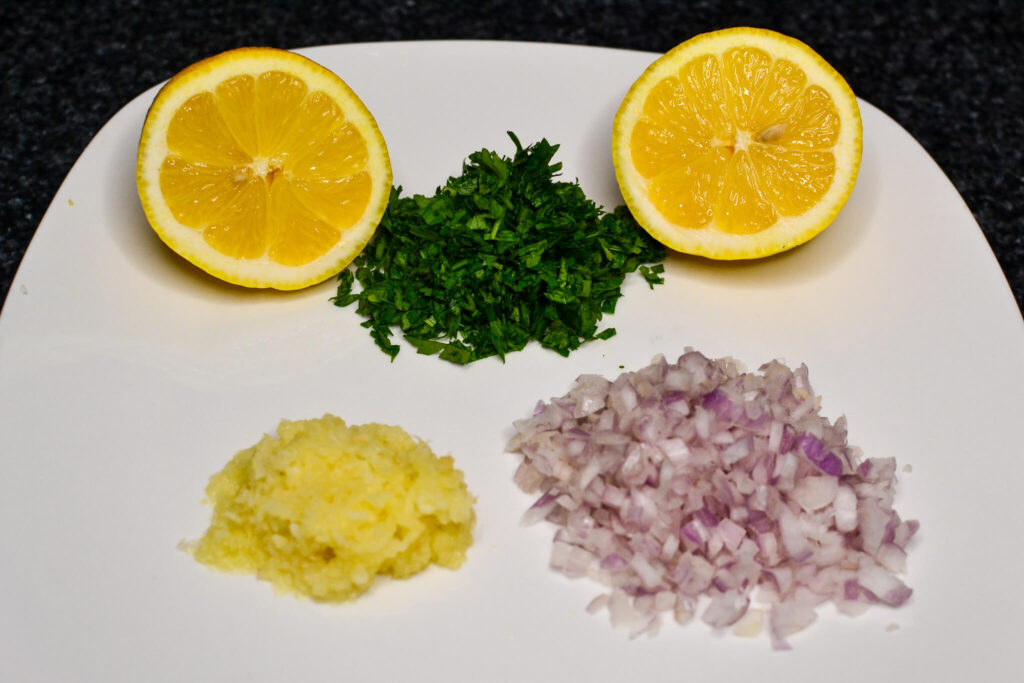
The sauce is the heart of this dish. It’s a delicate balance of flavors: the sweetness of shallots, the pungency of garlic, the subtle heat from red pepper flakes, the acidity of white wine and lemon, and the richness of butter. Here’s how to build a perfect sauce.

In a large skillet, heat 1/2 cup of extra virgin olive oil over medium heat. Using a generous amount of olive oil ensures the sauce has a rich, luxurious texture.
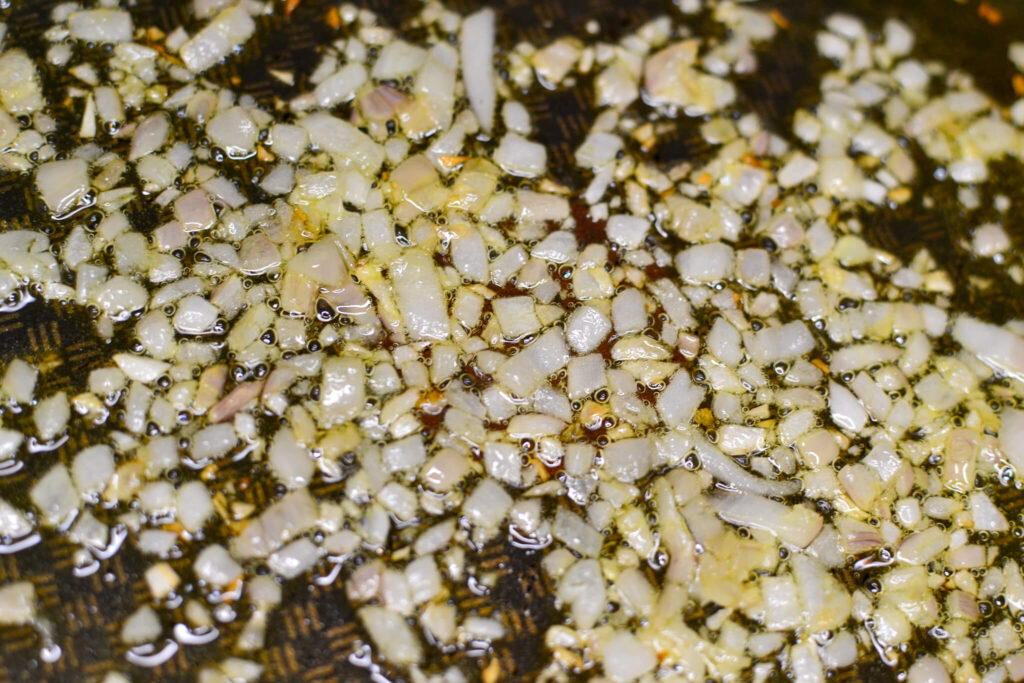
Add the finely chopped shallots. Shallots are a milder, sweeter alternative to onions, which makes them ideal for delicate seafood dishes like this. Sauté the shallots for 2-3 minutes, stirring frequently, until they soften and become translucent. Be careful not to let them brown – you want them to sweat and release their natural sweetness.
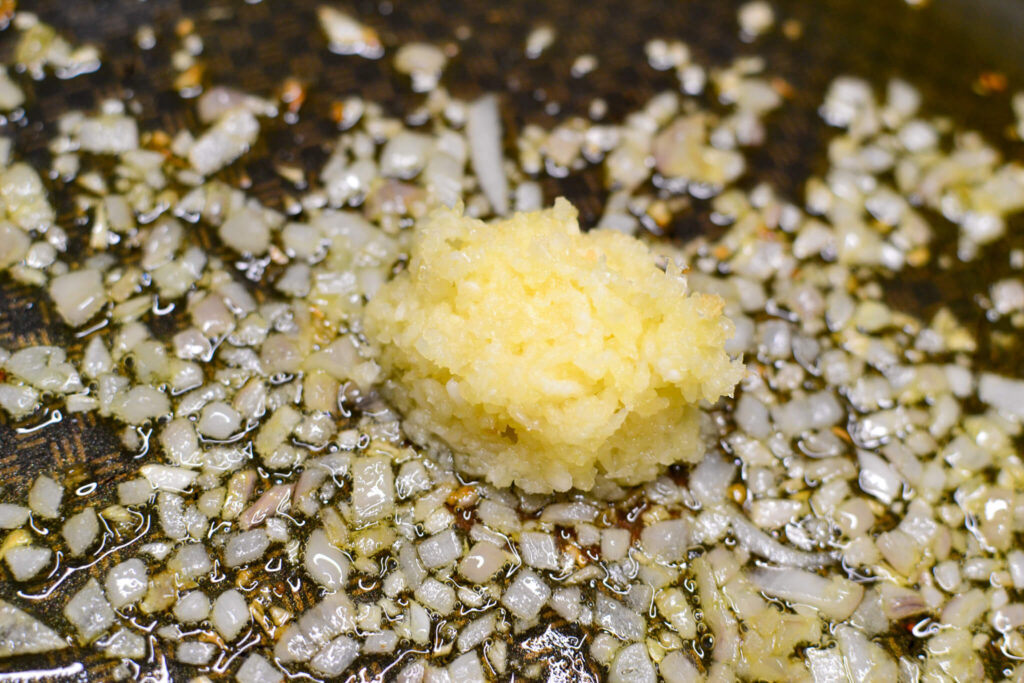
Add the minced garlic to the pan and allow it to cook briefly, just until fragrant. This will help release the garlic’s natural flavor.

Stir the garlic gently to prevent it from burning and ensure even cooking, blending its flavor into the rest of the ingredients.
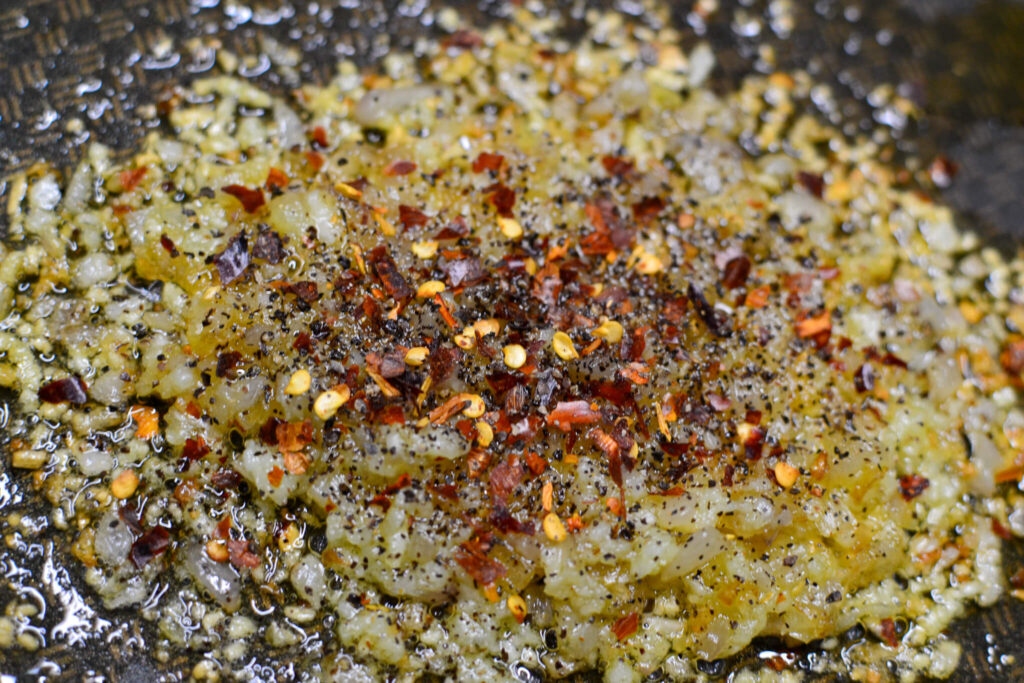
After stirring the garlic, sprinkle in the red pepper flakes and black pepper for an extra kick of heat and spice. Stir to combine them evenly throughout the dish.

Once the aromatics are perfectly sautéed, it’s time to deglaze the pan. Pour in 1/2 cup of dry white wine and 1/2 cup of clam juice to create the clam sauce, then bring it to a simmer.
The wine adds acidity and depth, while the clam juice enhances the seafood flavor without overpowering the dish. Let the clam sauce simmer and reduce for about 3-4 minutes, concentrating the flavors.
The sauce should thicken slightly but remain loose enough to coat the pasta later.

Once the sauce has reduced, add the butter (2 tablespoons unsalted) and 2 tablespoons of freshly squeezed lemon juice, enhancing the richness and brightening the dish with a hint of citrus.
Step 3
Make Pasta
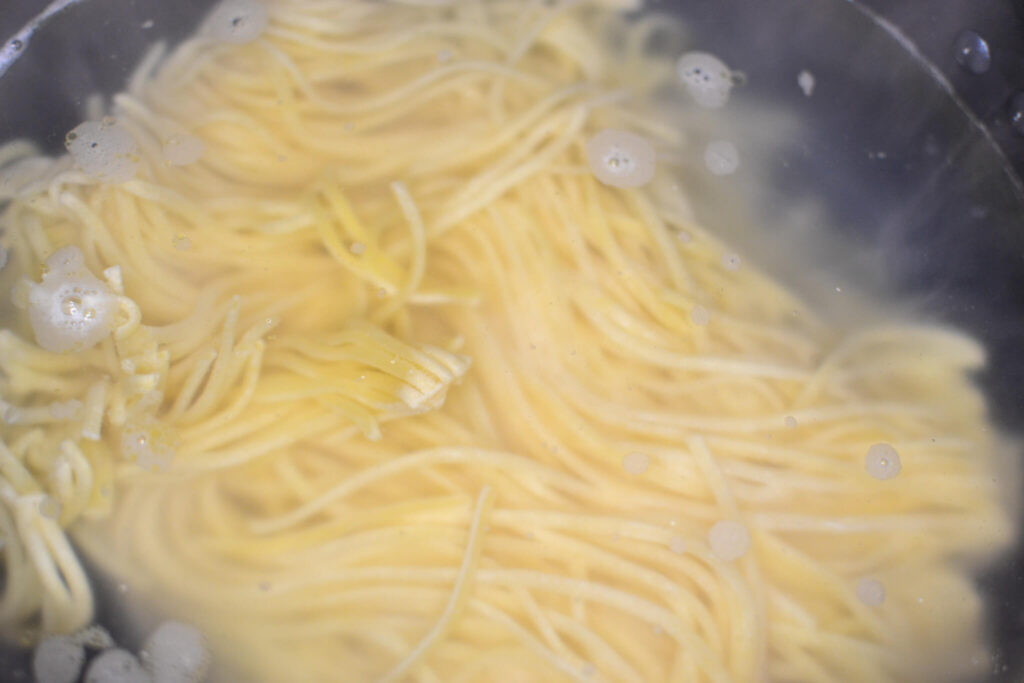
Bring a large pot of salted water to a rolling boil. The water should taste like the sea—add at least 1-2 tablespoons of salt per gallon of water to season the pasta as it cooks, enhancing its flavor.
Once the water is boiling, add the linguine and stir immediately to prevent sticking. Cook the pasta until al dente, firm to the bite, and check it a minute or two before the suggested time to avoid overcooking.
Before using the water drain, set aside 1/2 cup of reserved pasta water to use later in the sauce for adjusting its consistency.
Step 4
Cook Clams & Combine
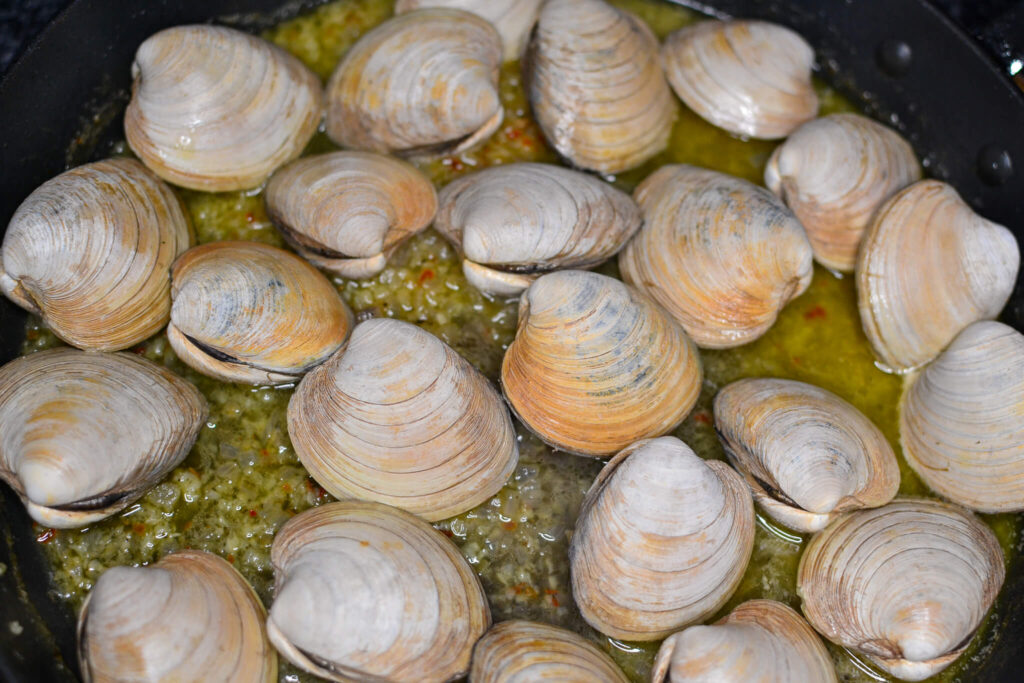
Now that your sauce is established, it’s time to add the star ingredient – the clams. Cooking clams is easy, but there are a few important things to keep in mind to ensure they cook perfectly.
Add the cleaned clams directly into the skillet with the sauce. Cover the skillet with a lid to trap the steam.
Cook the clams over medium-high heat for about 6-8 minutes. The clams will open up as they cook, releasing their briny juices into the sauce and intensifying its flavor.

Check the clams after 6 minutes. If some haven’t opened yet, give them another minute or two, but discard any clams that remain closed after cooking – these are not safe to eat.

Once the clams are cooked, it’s time to bring everything together. This step is all about ensuring the sauce and pasta are perfectly combined, so every bite is flavorful and balanced.

Start by adding a few tablespoons of pasta water and toss again. The starches in the pasta water will help emulsify the sauce, making it cling to the linguine beautifully. Add more water as needed until you reach your desired consistency.

Sprinkle 1/4 cup of freshly chopped parsley over the linguine and toss gently. Parsley adds a burst of freshness and color, balancing the rich sauce.
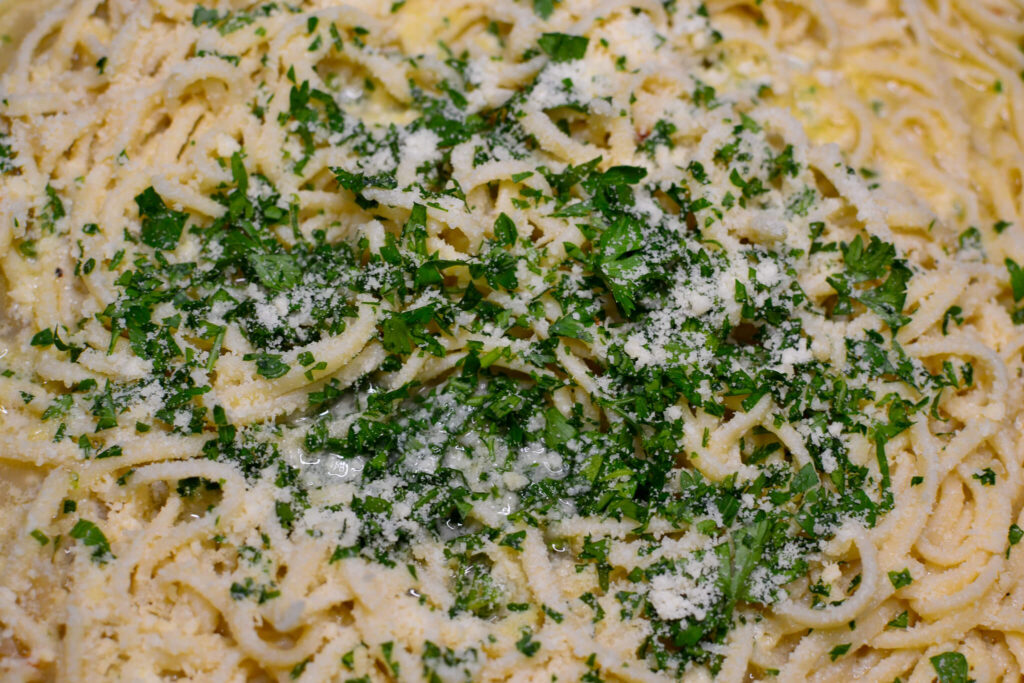
While Parmesan cheese is not traditionally added to seafood pasta dishes, some people enjoy the savory, nutty flavor it brings. If you’d like, sprinkle a small amount of Parmesan over the dish just before serving.
If you prefer to keep it traditional, feel free to skip this step.
Step 5
Enjoy Your Clam Linguine

Enjoy the Clam Linguine while it’s hot, savoring the delicate balance of briny clams, garlicky sauce, and fresh bursts of parsley. Pair it with a crisp glass of white wine for the perfect finishing touch to this flavorful, classic dish.

The Haunting of Hill House

Inspiration
The Bent Neck Lady (Little Neck Clams)
More About Clam Linguine

Clam Linguine
Ingredients
- 1 lb linguine
- 2 dozen littleneck clams
- 1/2 cup olive oil
- 4 garlic cloves
- 1 shallot
- 1/4 tsp crushed red pepper flakes
- 1/2 tsp black pepper
- 1/2 cup dry white wine
- 1/2 cup clam juice
- 2 tbsp unsalted butter
- 1 lemon
- 1/4 cup fresh parsley
- 1/4 cup grated Parmesan cheese
Pair the Clam Linguine with a crisp, dry white wine, such as Pinot Grigio, Sauvignon Blanc, or a light Chardonnay. The acidity of the wine complements the briny clams and the citrusy notes in the sauce. If you’re looking to add more seafood to the meal, consider serving a light appetizer like shrimp cocktail or a seafood salad.
Leftovers can be stored in an airtight container in the refrigerator for up to 2 days. To reheat, place the linguine in a skillet over low heat, adding a splash of reserved pasta water to revive the sauce’s consistency. Gently toss until heated through. While Clam Linguine is best enjoyed fresh, this method ensures that it retains much of its flavor and texture.
If you’re feeling adventurous, you can add other ingredients to the dish to make it your own. For a twist, try adding sautéed cherry tomatoes for a sweet burst of flavor, or incorporate a handful of baby spinach for a touch of greenery. If you like a richer sauce, add a splash of heavy cream at the end for a creamier consistency.
This recipe features fresh, handmade pasta from Maria’s Pasta Shop and premium clams from Fresco Fish, both sourced locally in Utica, New York.


